This article was co-authored by Marsha Durkin, RN and by wikiHow staff writer, Savannah Vold. Marsha Durkin is a Registered Nurse and Laboratory Information Specialist for Mercy Hospital and Medical Center in Illinois. She received her Associates Degree in Nursing from Olney Central College in 1987.
There are 14 references cited in this article, which can be found at the bottom of the page.
This article has been viewed 289,854 times.
You were feeling great yesterday but woke up today with swollen, painful lymph nodes—what’s the cause, and how should you treat it? Your swollen nodes will likely go away on their own, but in the meantime, we have a variety of effective, natural remedies to help ease things along and get you feeling better, faster. Remember, it's best to see a doctor if your lymph nodes are still swollen for longer than 1 week. Good health is on its way!
Things You Should Know
- Place a warm compress on the node to reduce swelling and pain. Hold the warm compress on the affected node until it cools, or around 10 minutes.
- Treat swollen lymph nodes with over-the-counter pain medication like Ibuprofen or Acetomenophin to reduce swelling and pain.
- For a natural approach, taking vitamin C supplements, or eating 2-3 raw garlic cloves can help to restore your immune system.
- Consult a doctor if your lymph nodes are swollen for more than 1 week. Swollen lymph nodes can sometimes indicate a serious underlying infection or disease.
Steps
Reducing Swelling in the Short Term
-
1Locate the swollen nodes. Run your fingers over your skin where you feel swelling or pain to locate the problem nodes. You have lymph nodes located in your neck, armpits, and groin. The swelling in the nodes can range in size from as tiny as a pea to the size of an olive or larger.[1]
- Remember that more than one node can be swollen simultaneously.
-
2Take an over-the-counter medication. Acetaminophen or ibuprofen can help to control the swelling surrounding your lymph nodes. They can also minimize the presence of other symptoms, such as fever. Make sure to take any OTC medications according to the directions on the bottle.[2]Advertisement
-
3Place a warm compress on the node. Hold a clean washcloth under warm tap water. Once it’s warm, lay the washcloth on the swollen node. Keep it in position until the cloth cools off. Repeat this process 3 times a day until the node goes down in size and the pain decreases.[3]
- A warm compress helps with swelling by increasing blood flow to the swollen area.
-
4Apply a cool compress to the node. Place a cold washcloth on the node for 10-15 minute intervals. Repeat this 3 times daily until the swelling starts to reduce.
- Cool compresses constrict circulation, numbing the area and reducing swelling and inflammation.
-
5Get a lymphatic massage. Applying gentle pressure and rubbing your lymph nodes can help reduce swelling by increasing blood flow to the area. Make an appointment with a massage therapist, or massage the area yourself if you can reach the impacted nodes. Gently rub the node while pushing your fingers in the direction of your heart.[4]
-
6Don’t squeeze the swollen skin. If you apply too much pressure to the nodes, you might burst the surrounding blood vessels and cause additional damage or even an infection. Reminding kids of this rule is especially important, as they might get frustrated and try to pinch the nodes.[5]
Receiving Medical Attention
-
1Make an appointment with your doctor. In many cases, swollen nodes will appear and disappear without major issues. However, if your nodes continue to grow or harden, it may be time to talk with your doctor. They will likely do a physical exam and may order blood tests or a scan, depending on the possible diagnosis.[6]
- See a doctor if your lymph nodes are still swollen after 1 week, as persistent swelling may indicate a serious underlying infection or disease.
- Swollen lymph nodes can be caused by various infections, including mononucleosis, tuberculosis, ear infections, strep throat, and measles.
- Seek out medical treatment if the lymph node becomes very large suddenly or overnight.
-
2Treat any infections quickly to avoid dangerous complications. If your lymph nodes are swelling due to an infection, they usually won’t return to regular size until you return to your normal, healthy self. Waiting to treat any underlying conditions can result in abscesses forming around the swollen nodes. In more extreme cases, you can even suffer from bloodstream poisoning due to bacteria.[7]
- Lymph node swelling and tenderness are often caused by a viral infection such as the common cold or flu. Viral infections typically go away on their own without medical intervention, so long as you get plenty of rest.[8]
- A bacterial infection such as mononucleosis or strep throat can cause lymph node swelling and pain as well. Unlike a viral infection, a bacterial infection often requires medical treatment via a prescribed antibiotic for the infection to go away. When you go see a doctor, they'll be able to determine the underlying cause.
-
3Take any antibiotics as prescribed. If your doctor believes your nodes are swollen due to harmful bacteria, they may prescribe antibiotics. Make sure to take the entire course of the antibiotics, even if you feel better midway through. If the infection is viral, then antibiotics are not an option.[9]
-
4Watch for other symptoms like a fever or a runny nose. If the swelling in your lymph nodes is caused by an illness or infection, then you’ll likely have additional symptoms. Possible additional symptoms include fever, runny nose, night sweating, or a sore throat. Identifying these other issues will help you and your doctor understand how to treat any underlying conditions.[10]
-
5Expect your recovery to take longer than a few days. Although it’s possible for a lymph node to improve overnight, this is highly unlikely. More frequently, the pain in a node can lessen over a few days, but the swelling may take weeks to go down.[11]
-
6Get the node surgically drained. If the infection progresses, the lymph node can become an abscess filled with pus. When this happens, the node may need to be drained by a medical professional to reduce the risk of a more serious infection. This is especially true if the abscess is in the neck area.[12]
Treating Your Nodes with Natural Remedies
-
1Eat raw garlic cloves. Some of the chemical compounds in garlic help to counteract infections of the lymphatic system. Get 2-3 cloves of garlic and crush them. Spread this mixture on top of a piece of bread and eat it. Repeat this process daily and watch for the swelling to improve.[13]
- This remedy won’t be for everyone, as some people can’t stomach the taste of raw garlic.
- You can also take garlic capsules for easier consumption, though raw garlic is more effective.
-
2Drink an apple cider vinegar and water mixture. Get a full glass of tap water and mix in 1 tablespoon (14.8 ml) of apple cider vinegar. Drink this mixture 2 times a day until you feel better. The acetic acid in the vinegar will help to rid your body of harmful bacteria that can abscess inside swollen nodes.[14]
-
3Get enough vitamin C. If you are vitamin C deficient, your body cannot fight off infection effectively. You can get additional vitamin C by taking a supplement or eating the right foods, such as oranges and strawberries. If you decide to take a supplement, make sure to clear it with your doctor.[15]
-
4Rub tea tree oil into the swollen skin. Mix 2-3 drops of tea tree essential oil with 2-3 drops of coconut oil. Use a cotton swab to apply this mixture to the irritated nodes. Repeat this process a maximum of twice daily to avoid irritating your skin.[16]
- Tea tree oil is anti-inflammatory and antimicrobial, making it great for combating swollen lymph nodes and infection.
-
5Drink cinnamon and basil tea. Cinnamon and basil have incredible infection-fighting powers on their own, but combined, they’re even more potent and are excellent at promoting lymphatic drainage and restoring your health.[17] First, bring 3 cups (709 mL) of water to a boil and add in 2 tablespoons (29.6 ml) of basil and cinnamon powder. Then, allow it to steep for 15 minutes before straining the tea into your cup of choice.
- Drink cinnamon and basil tea 3 times a day until your lymph nodes improve.
- Research suggests that cinnamon and basil even aid in cancer prevention!
Expert Q&A
Did you know you can get premium answers for this article?
Unlock premium answers by supporting wikiHow
-
QuestionWhat kind of doctor can I see for consultation on swollen lymph nodes?
 Marsha Durkin, RNMarsha Durkin is a Registered Nurse and Laboratory Information Specialist for Mercy Hospital and Medical Center in Illinois. She received her Associates Degree in Nursing from Olney Central College in 1987.
Marsha Durkin, RNMarsha Durkin is a Registered Nurse and Laboratory Information Specialist for Mercy Hospital and Medical Center in Illinois. She received her Associates Degree in Nursing from Olney Central College in 1987.
Registered Nurse
-
QuestionI have swollen neck lymph nodes and swollen gums at the same time. What could be the possible cause of those symptoms?
 Marsha Durkin, RNMarsha Durkin is a Registered Nurse and Laboratory Information Specialist for Mercy Hospital and Medical Center in Illinois. She received her Associates Degree in Nursing from Olney Central College in 1987.
Marsha Durkin, RNMarsha Durkin is a Registered Nurse and Laboratory Information Specialist for Mercy Hospital and Medical Center in Illinois. She received her Associates Degree in Nursing from Olney Central College in 1987.
Registered Nurse
Warnings
- If you have any trouble breathing due to swollen nodes in your neck or head, make sure to seek out emergency treatment right away.⧼thumbs_response⧽
References
- ↑ https://www.cuh.nhs.uk/our-services/dermatology/skin-cancer-service/how-to-check-your-lymph-nodes/
- ↑ https://www.saintlukeskc.org/health-library/when-your-child-has-swollen-lymph-nodes
- ↑ https://www.fairview.org/patient-education/115847EN
- ↑ https://dailyhealthpost.com/unclog-lymph-nodes-naturally-to-flush-out-toxins/
- ↑ https://pediaclinic.net/Lymph-Node-Infection-Viral
- ↑ https://raisingchildren.net.au/guides/a-z-health-reference/swollen-lymph-nodes
- ↑ https://raisingchildren.net.au/guides/a-z-health-reference/swollen-lymph-nodes
- ↑ https://www.mayoclinic.org/diseases-conditions/infectious-diseases/expert-answers/infectious-disease/faq-20058098
- ↑ https://www.hopkinsmedicine.org/healthlibrary/conditions/infectious_diseases/lymphadenitis_134,80
- ↑ https://raisingchildren.net.au/guides/a-z-health-reference/swollen-lymph-nodes
- ↑ https://www.hopkinsmedicine.org/health/conditions-and-diseases/lymphadenitis
- ↑ https://www.hopkinsmedicine.org/health/conditions-and-diseases/lymphadenitis
- ↑ https://www.ncbi.nlm.nih.gov/pmc/articles/PMC4103721/
- ↑ https://www.ncbi.nlm.nih.gov/pmc/articles/PMC1785201/
- ↑ https://www.ncbi.nlm.nih.gov/pubmed/19263912
- ↑ https://www.ncbi.nlm.nih.gov/pmc/articles/PMC1360273/<
- ↑ https://www.ncbi.nlm.nih.gov/books/NBK92774/
- ↑ https://www.mayoclinic.org/diseases-conditions/swollen-lymph-nodes/diagnosis-treatment/drc-20353906
About This Article
To reduce your swollen lymph nodes, take an over-the-counter medication, like acetaminophen or ibuprofen, which will help to control the swelling and reduce any fever you might have. In addition to taking medication, apply a warm or cold compress to the nodes for 10-15 minutes. Repeat this 3 times a day until your swelling goes away. You should also eat some oranges, strawberries, or kiwis, since vitamin C will help to fight the infection. While you’re waiting for your lymph nodes to heal, avoid squeezing or putting pressure on the skin, since this could burst the surrounding blood vessels and cause further damage. Your lymph nodes should heal on their own, but if they continue to swell or begin to harden, contact your doctor for treatment. For more tips from our Medical co-author, including how to locate your swollen lymph nodes, read on!
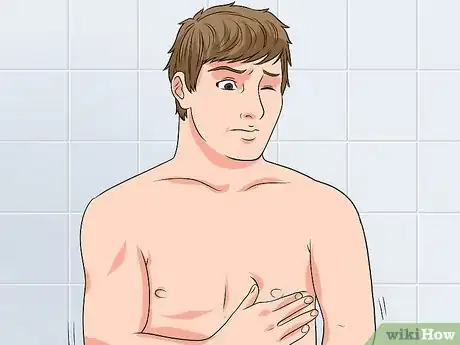
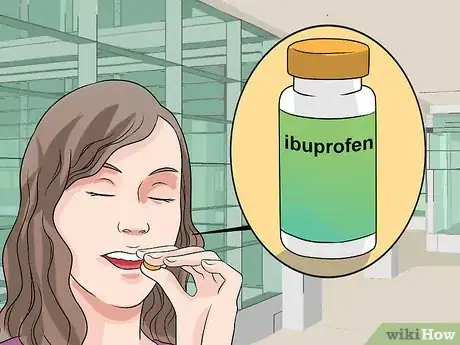
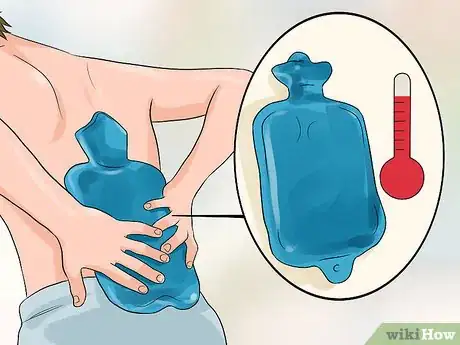
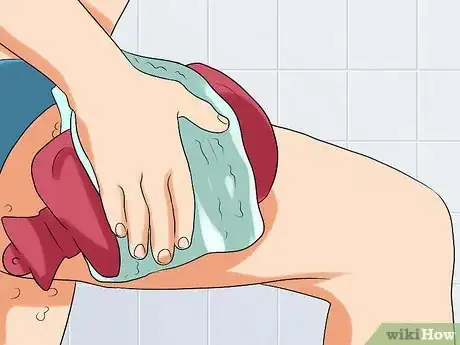
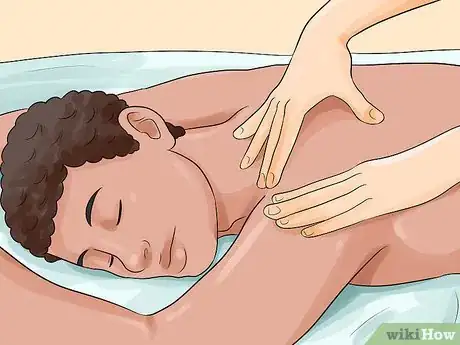
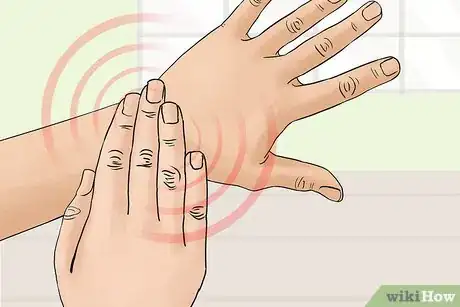
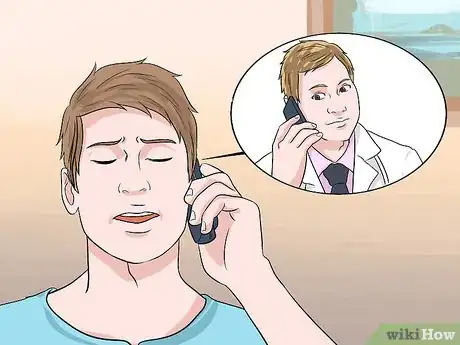
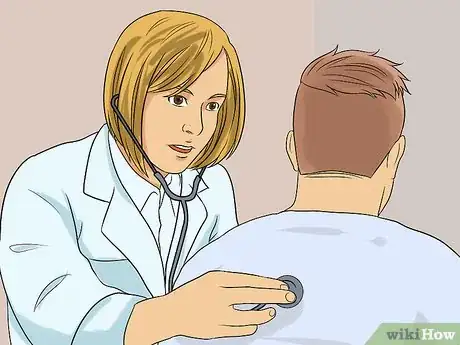

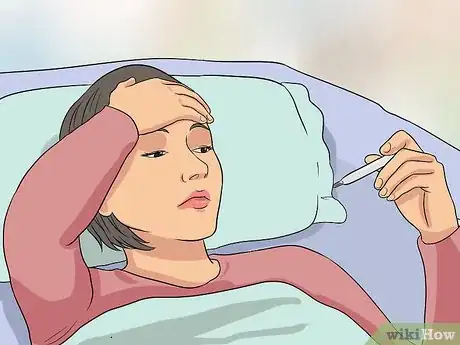
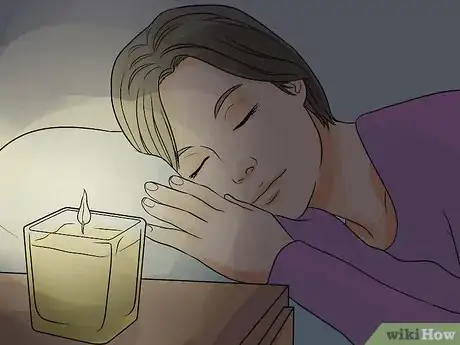
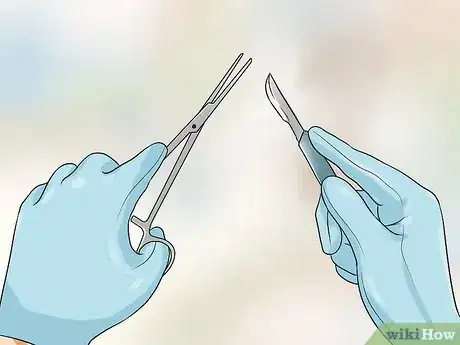
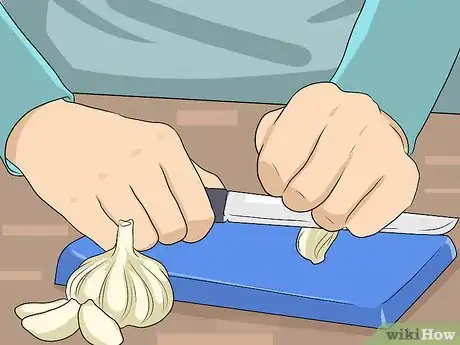
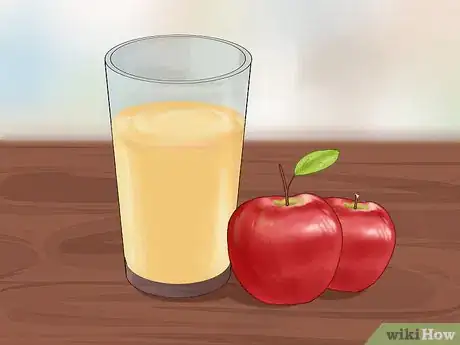



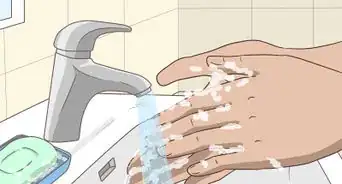
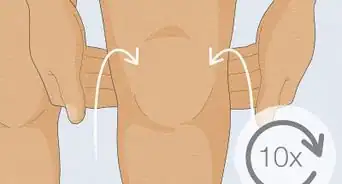

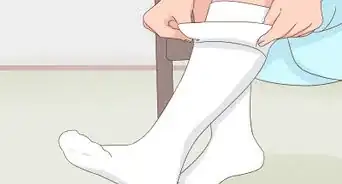
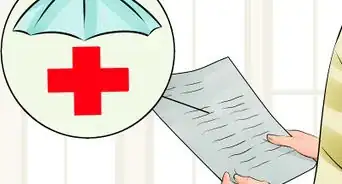




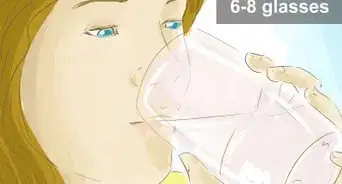
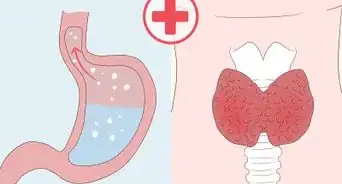
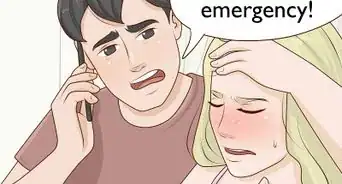
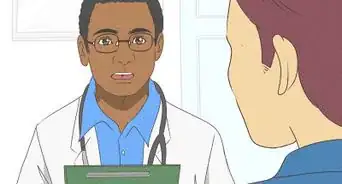









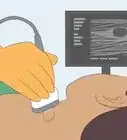






































Medical Disclaimer
The content of this article is not intended to be a substitute for professional medical advice, examination, diagnosis, or treatment. You should always contact your doctor or other qualified healthcare professional before starting, changing, or stopping any kind of health treatment.
Read More...